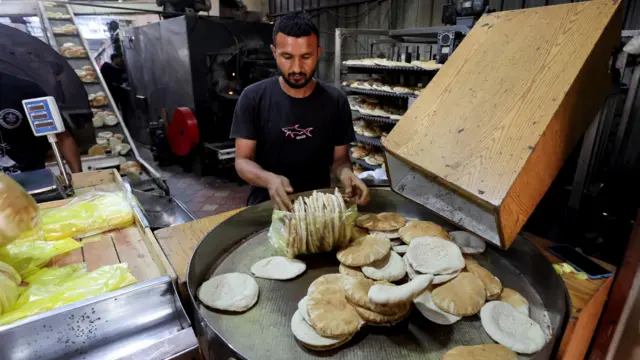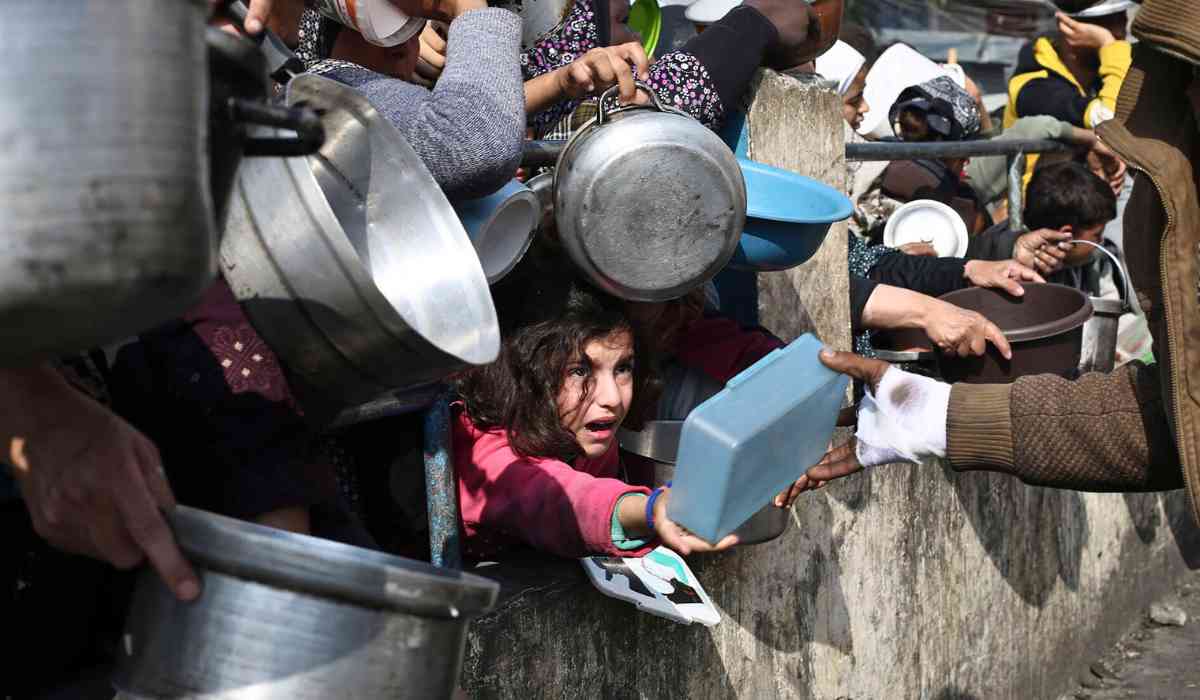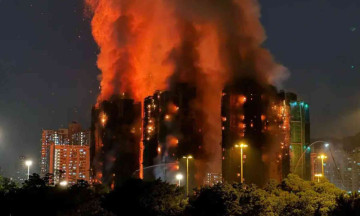In the Gaza Strip, the struggle for survival is reaching new heights as hunger spreads and food deliveries fail to keep up with the desperate needs of a population under siege. Families stand in long lines, hoping for a chance to secure even the most basic food supplies, while children and mothers face the growing threat of severe malnutrition. The situation is so dire that hunger is now fueling chaos, with people clashing over limited resources and aid agencies warning that unless urgent action is taken, the crisis will spiral further out of control.
A Crisis of Hunger and Desperation

For more than a year and a half, conflict and blockade have left nearly every person in Gaza without enough to eat. According to the latest reports, the entire population—about 2.1 million people—is facing high levels of acute food insecurity. Over half a million people, or one in every five, are at immediate risk of starvation. The Integrated Food Security Phase Classification (IPC) has found that 54% of the population is in an "Emergency" phase of food insecurity, while 22%—nearly 470,000 people—are in a "Catastrophic" phase, meaning they are facing starvation and death.
Children are among the hardest hit. Since the aid blockade tightened in March 2025, at least 57 children have reportedly died from malnutrition, and this number is likely to rise. Health officials warn that nearly 71,000 children under five could become acutely malnourished in the coming months, with over 14,000 cases expected to be severe. Pregnant and breastfeeding women are also at risk, with thousands needing urgent treatment for malnutrition.
Why Food Is So Hard to Get

The main reason for the food crisis is the ongoing blockade, which has severely restricted the flow of humanitarian aid into Gaza. Humanitarian agencies report that food, water, and medicine are often just minutes away across the border, but they cannot be delivered because of security concerns and restrictions. The situation has been made worse by the destruction of roads, markets, and infrastructure, making it even harder to distribute what little aid does get through.
Food prices have skyrocketed. In some areas, the cost of wheat flour has risen by as much as 3,000% since early 2024, making it impossible for most families to afford even the most basic staples. With most people unable to work and the economy in ruins, many are forced to rely entirely on humanitarian assistance.
The Human Toll: Stories from Gaza
Behind the numbers are real people, each with their own story. Mothers line up for hours, hoping to get a bag of flour or a can of beans to feed their children. Children are growing weaker, their bodies unable to fight off disease because of lack of food. Hospitals are overwhelmed with cases of malnutrition and dehydration, but they too are running out of supplies.
One aid worker described the scene: "Families are desperate. They see food trucks at the border, but they can't reach them. Every day, more people get sick, and more children die. The situation is heartbreaking."
Why This Matters and What Can Be Done

The crisis in Gaza is not just about food—it is about humanity. When people cannot get enough to eat, the social fabric begins to tear apart. People fight over scraps, and trust between neighbors breaks down. Children who should be in school are instead struggling to survive, and families who once lived normal lives are now reduced to begging for help.
From a neutral perspective, it is clear that everyone loses in this situation. Civilians suffer the most, but the ongoing chaos also makes it harder for any side to achieve peace. Aid agencies, governments, and international organizations all agree: the only way forward is to allow unrestricted humanitarian access to Gaza. This means opening borders for food, water, and medicine, and ensuring that aid workers can do their jobs safely.
Some argue that security concerns make it difficult to allow free movement of goods, but the cost of inaction is far greater. Every day that passes without enough food means more lives lost, more children stunted, and more families broken. The international community has a responsibility to act, not to take sides, but to protect innocent lives.
Looking Ahead

The situation in Gaza is a warning to the world. Hunger is not just a problem of the past—it is happening now, in real time, and it is getting worse. Without urgent action, the crisis will deepen, and the suffering will spread.
The solution is clear: allow food and medicine to reach those who need it most. Only then can the people of Gaza begin to rebuild their lives and look toward a future free from hunger and fear.
-
The entire population of Gaza is facing severe food shortages, with over half a million at risk of starvation.
-
Children and mothers are especially vulnerable, with thousands expected to suffer from acute malnutrition.
-
The blockade and destruction of infrastructure have made it nearly impossible to deliver aid.
-
Food prices have skyrocketed, making it hard for families to afford even basic staples.
-
The crisis is fueling chaos and desperation, threatening the social fabric of Gaza.
-
The international community must act to ensure unrestricted humanitarian access.
Gaza’s hunger crisis is a human tragedy, but it is also a call to action for the world. By working together, it is possible to prevent further suffering and give hope to millions who are struggling to survive.
With inputs from agencies
Image Source: Multiple agencies
©️ Copyright 2025. All Rights Reserved. Powered by Vygr Media.

























